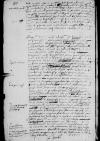⌊⌋ additis ⌊⌋ ad illustrissimum dominum ⌊Ottonem Henricum⌋ comitem palatinum Rheni[1],
quas, quemadmodum rogavi a Magnificentia Vestra, iam perlatas esse existimo. Neque in praesentia mihi temperare potui, cum ⌊hunc fratrem meum⌋ ad aulam allegarem, quin per illum et hanc scriptionem Magnificentiae Vestrae faustum statum et, ut in bono more apud nostrates positum est, prosperam valetudinem inviserem, quam diu fore
cf. Adagia 1526 No. 3437 sarta tecta ⌊sartam tectamcf. Adagia 1526 No. 3437 sarta tecta ⌋
atque integram Magnificentiae Vestrae cupidissime opto. Ceterum quid hinc scribam, non habeo, quam quod ⌊Angliae rex⌋ indutam semel tyrannidem adeo in suos fertur atrociter in dies exercere, maxime in magnos et bonos viros, qui monasteriorum et templorum expilationibus non applaudunt, quod abhinc multis saeculis omnes, qui umquam humanum sanguinem sicientes profuderunt, superarit longeque post se reliquerit. Novi item et prodigiosi priusque numquam auditi pacti, quod inivit ratione coniugii cum ⌊ea, quam duxit loco reginae⌋, occisa ⌊priore⌋ , eventum dicitur expectare, quae, ut fama est, iam gravida partui appropinquat; si marem pepererit, manebit uxor, sin minus, soluta fuerint iura matrimonii et vitae fortassis huius
miserae puerperae, ducturus eadem condicione aliam atque aliam, quousque masculinum quiddam nascatur. Hanc legem, cum in ⌊ea insula⌋ se et regem, et pontificem fecerit[3], ipse sibi sanxit libidinosis et impuris adulteris non ingratam. Porro legislatorem tot sceleribus et caedibus madentem paulo post Deus pro sua in omnes et omnia aequitate non imp[unitate] impunitate non donabit. De ⌊caesare nostro⌋ et Gallicis ac Turcicis rebus iam dudum hic nihil audimus. Si quid certi atque etiam de concilio Magnificentia Vestra habuerit, ut me participem faciat, meque, qua cepit, benevolentia prosequi non desinat, impense oro. Eandem Magnificentiam Vestram ⌊Christus dominus noster⌋ quam diutissime sospitet prosperetque in omnibus.
[1 ] As requested by Sigismund I, Dantiscus held negotiations with Otto Heinrich Wittelsbach in Cracow during the Diet of 1536/37 (cf. letter ⌊⌋). A few months later, he received a gold cup from him as gift, for which he thanked him in a letter enclosed with his previous letter to Boner (see letter ⌊⌋)
[3 ] The Act of Supremacy (1534) with which the English parliament legalized the split of the English church from Rome, at the same time making the king the supreme head
of the newly established and independent Church of England
